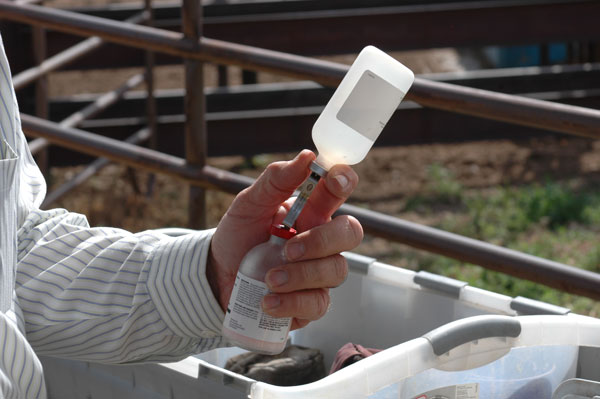What Happens When A DVM & An MD Talk Antibiotics?
Prudent use of antibiotics is a topic that both veterinarians and physicians can agree on.
May 13, 2014

Among veterinarians, prudent antibiotic use is of great concern. It turns out that we have plenty in common on this issue with medical doctors.
I’m a cattle vet from Missouri. At a recent party in northern California, I spoke with a progressive-minded physician who specializes in hematology and internal medicine. Her first question to me was, “Do you have a strong feeling about FDA Guidance 213?”
Guidance 213 dictates judicious antimicrobial use in food-producing animals by extending veterinary oversight and eliminating the sub-therapeutic use of medically important antibiotics in animal agriculture.
Naturally, my first thought was that she was setting me up to give her own opinion on the subject. The guidance has been widely criticized for “not doing enough.” It turned out she really wanted to know my professional thoughts. I figured that if I had someone who was truly willing to listen, I owed her my honest opinion.
I explained that I looked at the guidance as a positive step. Veterinarians need to be involved and accountable for all antibiotics used in beef cattle production. In my opinion, more oversight is the right thing to do. I shared situations where antibiotic resistance issues were real, and how I responded as a veterinarian – like during an outbreak of enteric disease in newborn calves when the traditional antibiotic culture and diagnostic information failed to lead to long-term solutions. This particular situation highlighted the soberness of the outbreak at hand.
Sign up now for BEEF Daily and get all the latest hot topics straight to your inbox!
We also discussed examples of appropriate use and oversight, and cases where changes in management and preventive medicine programs successfully reduced the need for therapy. I explained to her that veterinarians are trained not only to deal with the strict medical side of disease problems but also to investigate how the environment and production systems interact with disease processes.
Often, the long-term solutions we implement preempt the need for antibiotic use in the first place. She was interested to hear, for instance, how changing pasture management strategies built immunity and lowered exposure, drastically reducing the need for antibiotics to near zero. As a result, when antibiotics are needed, they are much more effective.
A good conversation
We had a good conversation about our respective levels of education, and how we both monitor antibiotic resistance and sensitivity as part of our professional activity.
I think I surprised her, and myself, about how much common ground we had on this issue.
She took the time to listen and learn, and she admitted that she had a misconception or two. I listened to her take on the issue. Her perspective is that humans and animals are part of the same biome, and it is important to elevate the position and responsibility of the veterinarian to ensure human safety. She was adamant about trained veterinary medical professionals playing the critical oversight role because of the importance of antibiotic use in food-producing animals.
Go figure. We were in agreement.
From this conversation, I learned that people outside the veterinary industry have more of a vested interest in how we conduct our business than I initially thought. If there are misconceptions about our industry, it might be our own fault.
I encourage all livestock veterinarians to get involved in this conversation and be more vocal about the important role we play in food-animal medicine. We can’t be having these conversations in a vacuum. By extending the discussion around antimicrobial concerns to the greater medical community, we can better work together to capitalize on our respective industry strengths to overcome the challenges of the future.
John Groves DVM, Eldon, MO, has been in private practice for 17 years, focusing on large, progressive registered and commercial herds with emphasis in production efficiency optimization in all phases of management. Groves also works with backgrounding operations that range from short-term starting operations to grazing and retained ownership programs.
You Might Also Like:
Hooray! We’ve Succeeded In Scaring Our Kids
3 Ways Beef Is Making A Comeback With Consumers
You May Also Like


.png?width=300&auto=webp&quality=80&disable=upscale)
